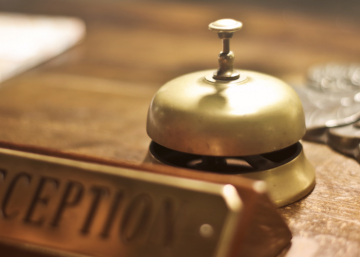(GA, 30 April 2021)
By Giovanni Angelini
QUALITY OF INDOOR AIR IN HOTELS
A clear competitive advantage that can generate additional revenue.
Quality of indoor air is of paramount importance to hotel guests and employees. Unfortunately, ventilation systems don’t always get the necessary attention nor funds required to keep them in top condition and up to date with the latest solutions and technology.
Following the COVID-19 outbreak, much emphasis has been placed on surface sanitation, hand-washing, mask-wearing, contactless interactions, the promotion of social distancing and others. These are all valid public health pursuits and should continue, in keeping with expert advice. However, much less has been said about the indoor air that we breathe.
Most hotels – especially urban properties with sealed windows – have to deal with a constant flow of airborne contaminants including dust, pollen, mould, mildew, bacteria, chemical fumes, volatile organic compounds from carpets, cigarette smoke, C02, outdoor pollution and others.
If not dealt with effectively, these contaminants can pose health risks to guests and employees, potentially giving rise to infections and aggravating allergies.
A hotel or resort is legally responsible for ensuring that its environment is safe for all, and at all times – especially during times of crisis.
When it comes to safety and comfort, it is important that hotels implement top of the line equipment (not the cheapest) and strictly implement regular maintenance and cleaning-paying particularly close attention to air ducts, HVAC, cooling towers, and air filters.
It is a fact that coronavirus infections occur at both, short and long distances. Short distance when infected persons sneeze-cough-talk. Long distance when small droplets with the virus stay suspended in the air (airborne) including in the air-conditioning/ventilation systems.
One major step towards reducing the risk of infection in Hotel’s is the upgrading of the building’s air filter/ventilation system from the air handling unit capacity to modern/efficient filters.
MERV filters (minimum efficiency reporting value) and HEPA filters (high efficiency particulate air) are perhaps among the very best air filtration system available in the market;
- MERV scale goes from 1 (lowest) to 16 (highest).
- HEPA scale goes from 17 to 20.
In order for Hotel’s to capture 90%-95% of all the indoor contaminants/particles, it is strongly advised not to go below MERV-13 when installing/upgrading room and public areas filters. Of course the highest-the-better.
Air filters are not only a prevention measure against airborne pathogens. They also capture inorganic pollutants like particulate matter, improving the indoor air quality in general.
For even better results, filtering can be combined (recommended) with an air purification method like Ultraviolet Germicidal Irradiation (UVGI). Air purification with UVGI not only kills viruses, but also bacteria and mold spores.
Of course MERV-14, 15 or 16 will give hotels a much stronger competitive advantage and a clear reason to promote/market it to the consumers. Quality of air is of particular interest/demanded by most market segments patronizing the hotels. Note that with MERV 14-15 filters combined with UVGI germicidal lamps, your risk of catching airborne viruses in a hotel room is practically nil.
In case of old buildings where up-grade is not possible, portable air cleaners with MERV-13 or better filters can/should be used in each room and in public areas.
And let’s not forget the exhaust air system of the public restrooms – which should be running 24/7 at around 30 cfm.
An important question – and a key objective for any hotel- should be: What can be done to achieve similar air quality to a modern airplane, where the cabin air is filtered and renewed every two-to-three minutes? The hotel industry should look at this in the future.
Of course, it is not easy to measure the impact on business, but operators with top of the line (MERV14 or 15 filters with UVGI germicidal lamps) facilities can expect a considerable higher revenue in both rooms and public areas as compared with the run-of-the-mill facilities.
Properly explained and properly marketed, a hotel has the potential to increase its RevPAR by 10%-15%. Of course It’s hard to forecast it, but do remember that safety and well-being have become the biggest factor for customers in choosing a hotel, and, in the new normal, properties which take care of all aspects of a guest’s health will be in the highest demand and paying 10% – 20% more for it is in most case not an issue. This will easily justify the cost of installing and maintaining this most efficient air filtration system.
With every major crisis comes a moment of opportunity. This is a time for the hotel industry to think outside the box and must accept fundamental shifts and structural changes. In addition to agility, efficiency, innovation, automation and speed, hotels have a clear opportunity to maximise on well-being as it has become the most important factor for travelers and the industry should maximise on this.
With a broadening audience and heighted search for safety/security, the quality of indoor air will definitely spur new and distinctive demand in the coming months/years. The industry’s pivot to well-being is no longer a trend but a necessity and in some case, this requires a change in hoteliers mindset.

